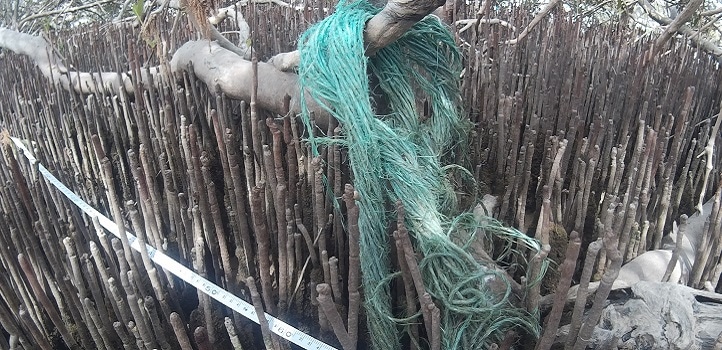May 14 2019
According to a recent study from King Abdullah University of Science and Technology (KAUST), mangrove forests located on the coasts of Saudi Arabia serve as litter traps, accruing large amounts of plastic litter from the marine environment.
 More than 90% of the litter found in the survey was identified as plastic: the most common types of litter included bottles, bags, lengths of rope and food wrappings. (Image credit: KAUST)
More than 90% of the litter found in the survey was identified as plastic: the most common types of litter included bottles, bags, lengths of rope and food wrappings. (Image credit: KAUST)
In this study, an explanation is provided for the fate of missing marine plastic litter and how it poses a serious threat to coastal ecosystems.
Of all the plastic discarded in the marine environment globally, only 1 percent is found floating in surface waters. That means that 99 percent of the plastic is elsewhere, but yet we don’t know where exactly.
Cecilia Martin, Red Sea Research Center, KAUST
In earlier studies, Martin and others in Carlos Duarte’s research team discovered that the Red Sea contained moderately low levels of plastic litter. Then, in order to find out the site of this missing litter, the researchers scoured the beaches with the help of an unmanned aerial vehicle.
Now, Martin, along with Hanan Almahasheer, has mapped litter in the mangrove forests along the coasts of the Arabian Gulf and the Red Sea. The duo recorded the location and type of the litter, and also the weight of certain items and numerous aspects of the locations, like the density of the trees, the distance to the closest coastal city and to heavy marine traffic, and the distance of the litter from the sea or the shore.
The researchers discovered that for every square meter or two, there was one litter item, with greater density found along the Arabian Gulf compared to the Red Sea. Over 90% of the litter contained plastic, with small items like bags, bottles, food wrappings, and lengths of rope being the most common debris. In fact, more litter was found in high-density groves, where the aerial roots function like a sieve, trapping large amounts of plastic debris from the water and causing the mangrove forests to accrue more plastic than that of bare beaches.
The analysis performed by the team revealed that the debris’ density relies on the distance to the main maritime traffic routes instead of land-based factors, for example, the distance to the nearest city. While litter accumulation was less owing to traffic further from the coast, it was only up to a specific distance. Surprisingly, once the traffic was over 15 km away, the density of debris started to increase again. This is because the debris is transported to the mangroves by currents, proposed the researchers.
In addition to harming the mangroves, litter can also be consumed by other marine creatures that utilize the forests as a nursery. Moreover, chemicals related to the debris, like industrial pollutants or additives absorbed by the plastic, can also affect these ecosystems.
The researchers are now investigating whether microplastics are accumulating in mangrove sediment, which can perhaps be a vital sink for plastic marine pollution and elucidate the fate of certain plastics that are not accounted for.
Such findings emphasize the need to reduce the use of plastics and appropriately tackle plastic waste so as to sustain these vital ecosystems.